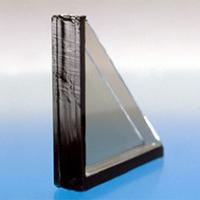Date: 7 November 2005
This unique 4 terminal solar cell design uses a combination of thin film transparent cell technology, derived from the Companys Power Glass initiative, with that of a nano-crystalline solar cell. XsunX believes that the combination of these two technologies into a single device holds a promising opportunity to deliver low cost, high efficiency, flexible, and light weight solar cells providing performance characteristics commonly found only in various forms of expensive crystalline wafer technologies.
The design of the 4 terminal thin film solar cell provides many advantages to existing multi-junction solar cell designs. A primary benefit is that the 4 terminal cell does not require electrical current matching between each cell. This circumvents a common problem plaguing multi-junction devices that can cause reduced overall solar cell power output. Stability issues are also addressed through the use of low band gap nano-crystalline junction materials and ultra-thin amorphous silicon materials to create a stable and efficient solar cell stack. Low temperature processing capabilities of this design may further increase manufacturing efficiencies allowing the use of inexpensive plastic substrate materials currently in use by the Company.
The decision to diversify the Companys product base to include opaque solar cell designs was fueled by what the Company sees as explosive international growth in the demand for opaque solar cell products and applications. In countries such as China, Japan, Germany, and here in the U.S., there is a growing trend supporting the increased use of green building designs promoting the use of integrated solar technologies within building materials. XsunX anticipates that the development of a stable, high efficiency, thin film solar cell could provide building material manufacturers with a preferred alternative to the use of lower efficiency multi-junction thin films and the more costly multi-crystalline solutions.
In evaluating this technology, we saw it as a perfect opportunity to leverage some of our existing technologies in the development this new solar cell device, stated Tom Djokovich, XsunXs CEO. Expanding our product base to include opaque solar cells will allow us to offer BIPV solutions for transparent building surfaces such as architectural glass, and the balance of buildings opaque surfaces such as residential and commercial roofs systems. Our business goal has always been to develop products with applications that promote the wide scale use of photovoltaic technologies. We believe that our transparent Power Glass and new opaque 4 terminal solar cell technologies will allow us to realize this goal, concluded Mr. Djokovich.
















Add new comment